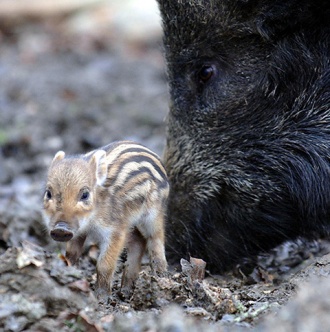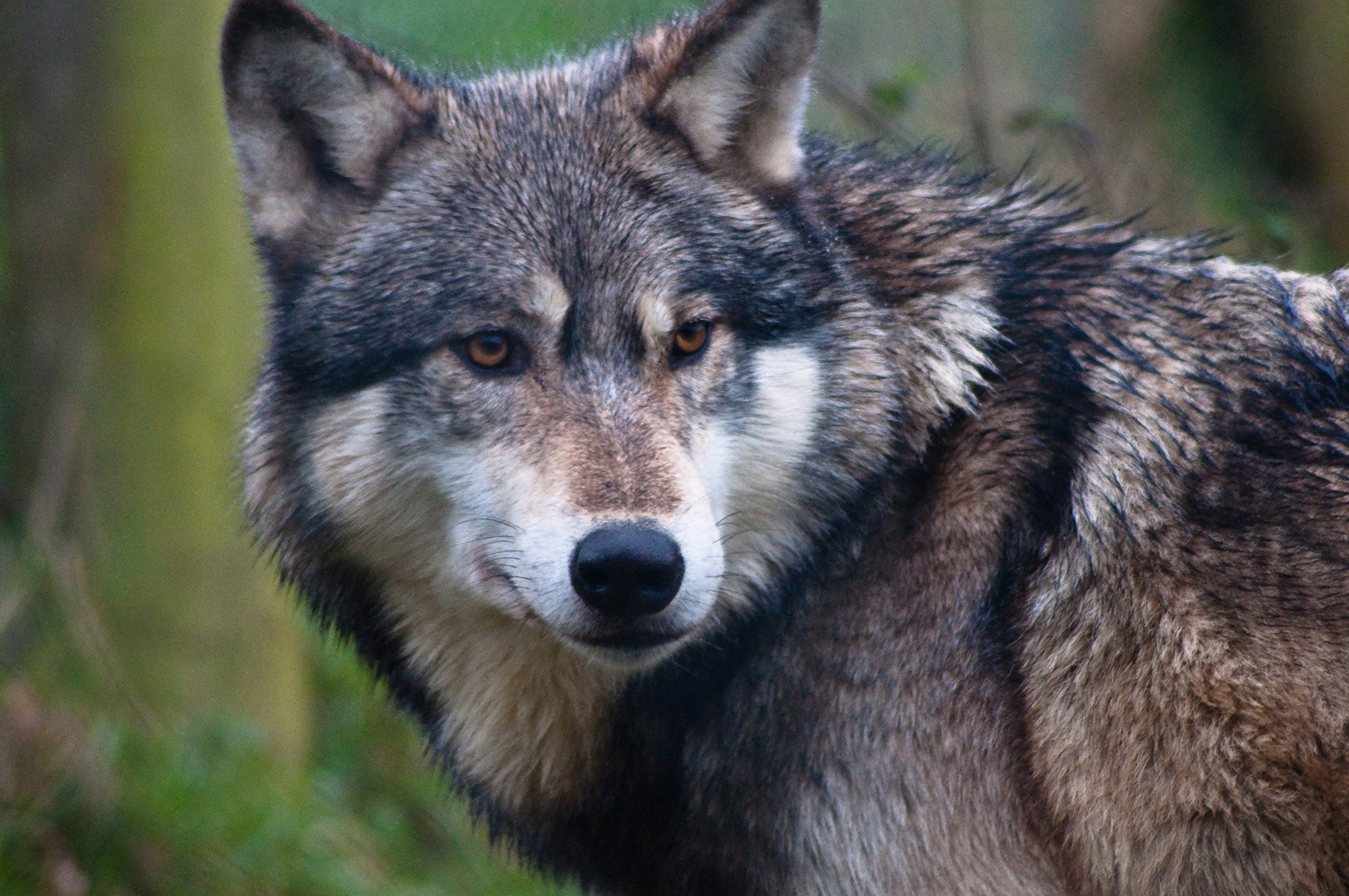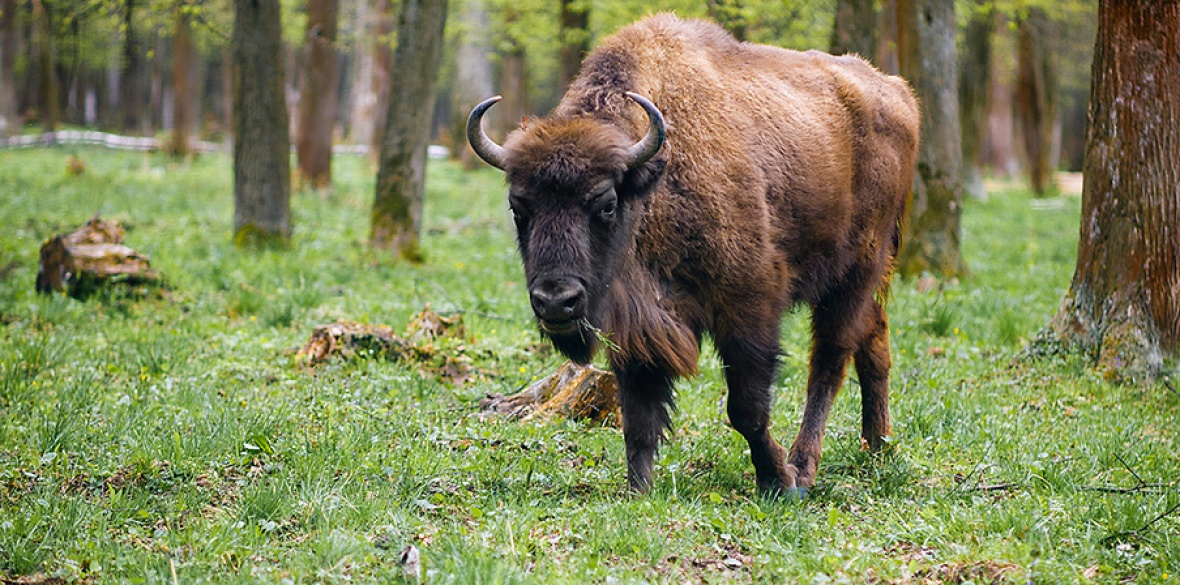This is the last article you can read this month
You can read more article this month
You can read more articles this month
Sorry your limit is up for this month
Reset on:
Please help support the Morning Star by subscribing here
TODAY’S pub quiz question is what is Europe’s biggest land mammal? Give yourself a point if you went for the European bison or the European wood bison (Bison bonasus). Just half a point if you gave it one of its colloquial names such as the wisent, or the zubr.
This huge buffalo-like species can weigh up three-quarters of a ton. It isn’t the same species you see in cowboy films.
That one is the American bison (Bison bison). These are more usually known as buffalo. Actually buffalo and bison are two different types of animals.
The European bison was never native to Britain, but a very close relative the now totally extinct worldwide forest bison (Bison schoetensacki). It used to roam the British countryside and some of us, me included, would like to see it — or something very closely related — living wild here again.
Our bison was here roughly 6,000 years ago and bison fans, like your writer, believe that the surviving European bison is a suitable and close replacement for this extinct and much-missed species.
There are several confirmed reintroduced breeding populations of wild boar in Britain. In England they are established on the Kent/East Sussex border, in Dorset, in Devon and in Gloucestershire’s Forest of Dean.
Animals from the Forest of Dean have migrated into Wales and become established in Monmouthshire.
Boar are the wild ancestors of domestic pigs. Wild boar have stocky, powerful bodies with a double layer of grey-brown fur — the top layer harsh, bristly hair; the underlayer much softer. Mature males have tusks that protrude from the mouth.

Piglets are a lighter ginger-brown, with stripes on their coat for camouflage. These young wild boar are often known as humbugs. Their light brown and black stripes that they have running across their back make them look like the old-fashioned humbug sweets. The coat becomes darker and a more uniform colour as the humbugs grow up.
Fully grown wild boar can be large animals. They can stand up to 80cm (31in) at the shoulder. They normally weigh 60-100kg, although males over 200kg have been reported in some parts of the world. That is a lot of delicious pork, ham and bacon which makes poaching common.
During the breeding season, male boar develop a thick layer of bodily tissue to protect themselves from injury during fights.
Boar are omnivores and will eat a wide range of plant and animal matter. The majority of their diet is made up of roots, bulbs, seeds, nuts and green plants. However, as opportunistic feeders, they will eat much of what they come across on the forest floor. This can include carrion, small mammals, birds’ eggs, earthworms and other invertebrates.
Most boar live in groups known as sounders, made up of adult females and their young. Adult males are solitary, only seeking out females in the mating season, which takes place in winter. Rival males will fight using their tusks to determine access to females.
A litter of up to 10 piglets is born in spring. Males will stay with the sounder until the piglets are around one year old. Females will either remain with the group or move into a new territory.
The current British boar population is derived from captive animals that either escaped or were illegally released. An estimated 2,600 animals are now living wild in several breeding populations. Wild boar are common on mainland Europe, with an estimated population of several million.
Normally these wild pigs will flee from people, but can be aggressive if they feel threatened, especially females with young. Dogs should be kept on leads in woods where boar are known to be present.
The status of wild boar in Britain is complicated. A native species, it was originally hunted to extinction at some point during the Middle Ages. In the 1990s, sightings of free-living boar became relatively common.
The wild boar’s presence divides opinion. While some, like me, welcome the return of a once-extinct native species, others are concerned about agricultural damage and collisions with traffic.
It has been suggested that wild boar can have both a positive and negative impact on woodland biodiversity, but the exact impact is currently unclear.
They have no natural predators in Britain, meaning culls are being carried out in some areas in a bid to control population growth.
I have written before about the reintroduction of the beaver. Where it has been reintroduced it has proved its value in adding biodiversity and avoiding flooding in our smaller rivers and larger streams.
In this year’s Chelsea Flower Show the winning garden was based around a beaver dam as part of a rewilding project.
My last suggestion for reintroduction of another long-extinct native species is the wolf. It is perhaps the most contentious of any reintroduction but I think there are good arguments for bringing it back.
The wolf is a keystone species, the wolf, like the lynx, alters the behaviour of its prey species, in Britain, primarily deer. Today our deer, with no natural predators, are becoming more and more numerous and are playing havoc with our native and commercially planted forests.

Wolves would control this woodland destruction which would in turn boost biodiversity and transforms landscapes. The carcasses left after wolf kills of deer provide food opportunities for many creatures, adding to abundance of carrion-eating wildlife.
Wolves need a home range of tens of kilometres, with enough habitat and food to maintain a healthy pack. Studies have shown that wolves prefer to hunt wild prey.
They will sometimes prey on livestock, often when they’re travelling alone if the pack has been disrupted or they’re a young wolf looking for a mate to establish their own pack.
In mainland Europe, where wolves are present, the use of guard dogs and other protections can be effective. We might also need to invent fair compensation schemes for livestock farmers.
Wolves were the last of Britain’s top predators to be hunted to extinction. It’s believed they disappeared sometime in the 18th century, following centuries of persecution.
Wolves were hunted and persecuted across Europe and went extinct across most of western Europe, hanging on places such as Italy, Poland and Bulgaria.
Since the banning of wolf-hunting in Poland in the 1990s, the wolf population has been recovering and spreading west. Wolves have successfully established in Germany and reached as far as the Netherlands, Denmark and France.
While there is sufficient habitat and wild prey for the establishment of wolves in parts of Scotland, Wales and England, at present there are no plans to reintroduce them. Any reintroduction would have to be carefully considered and have public support.
Countries in Europe that have run wolf education programmes have been most successful at welcoming them back. There would have to be changes in the way livestock is managed (with compensation schemes in place) to enable this key ecosystem engineer to return.
If you have ever seen a pack of wolves hunting through forest, as I have in Canada, you will never forget the exciting sight.
If your pub question-mistress omits the word “land” from her question then win a bonus point (and a good argument). The biggest native British mammal is of course, the blue whale. Now what can we do to bring a few more of the great whales back to our waters?











